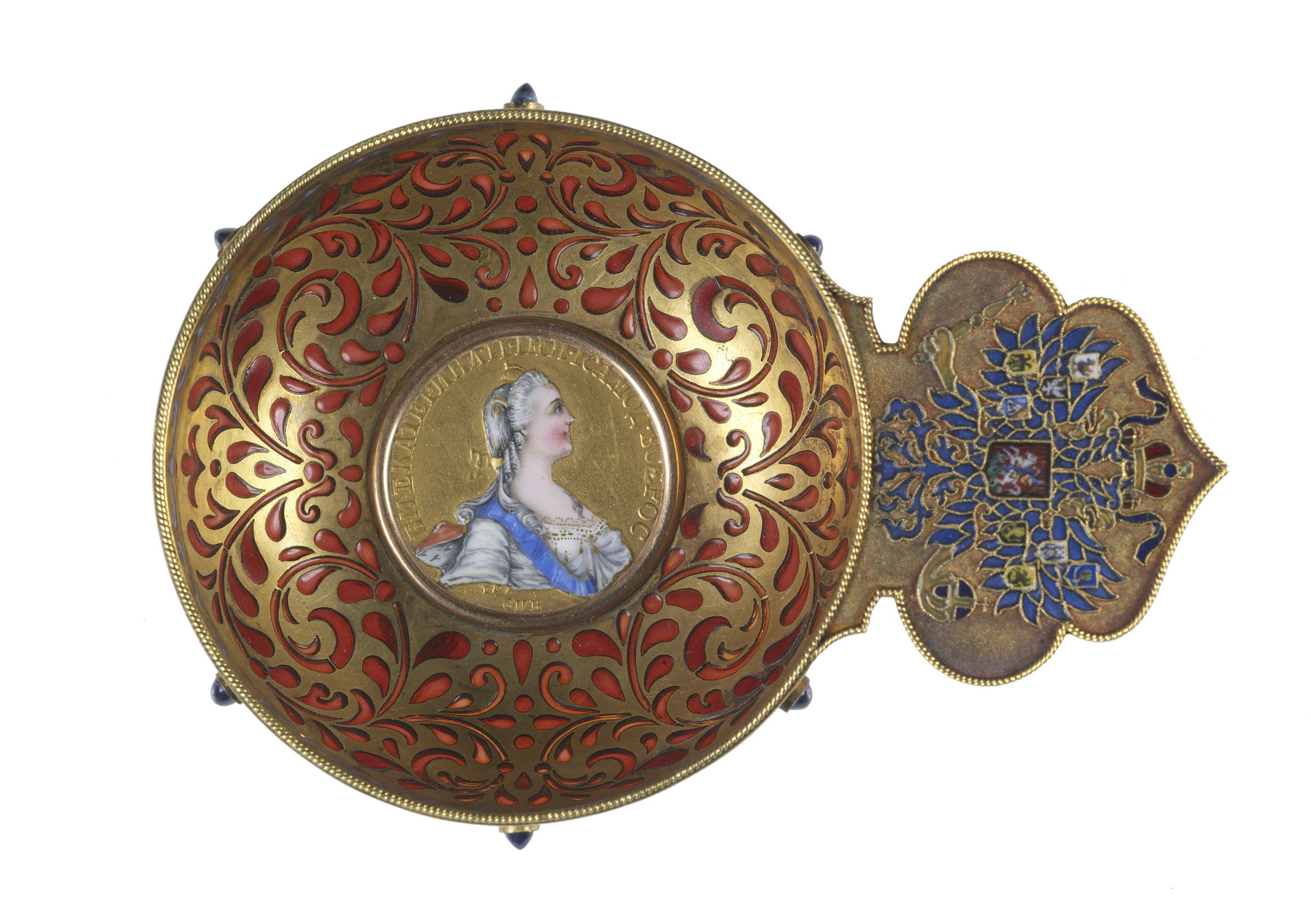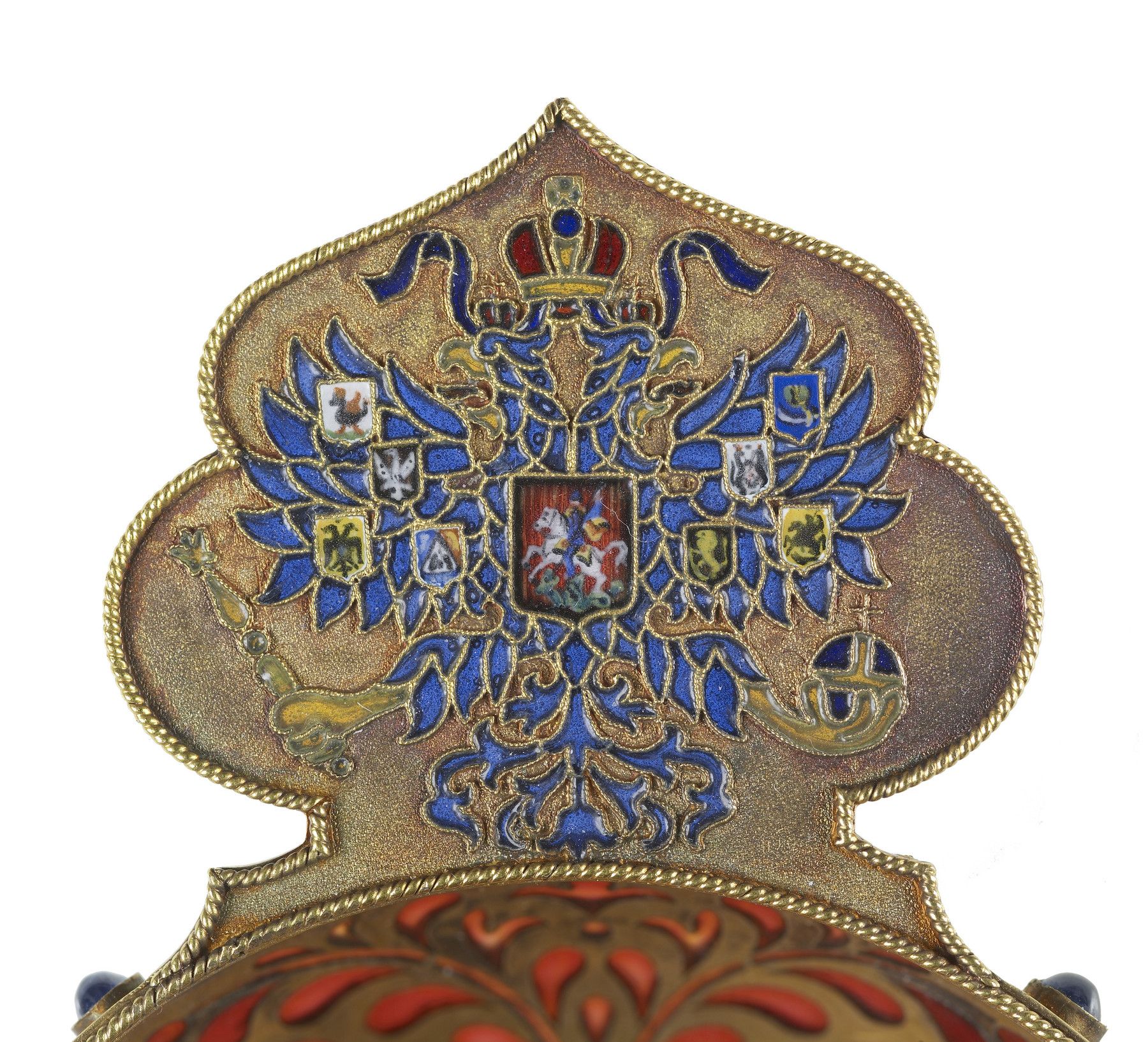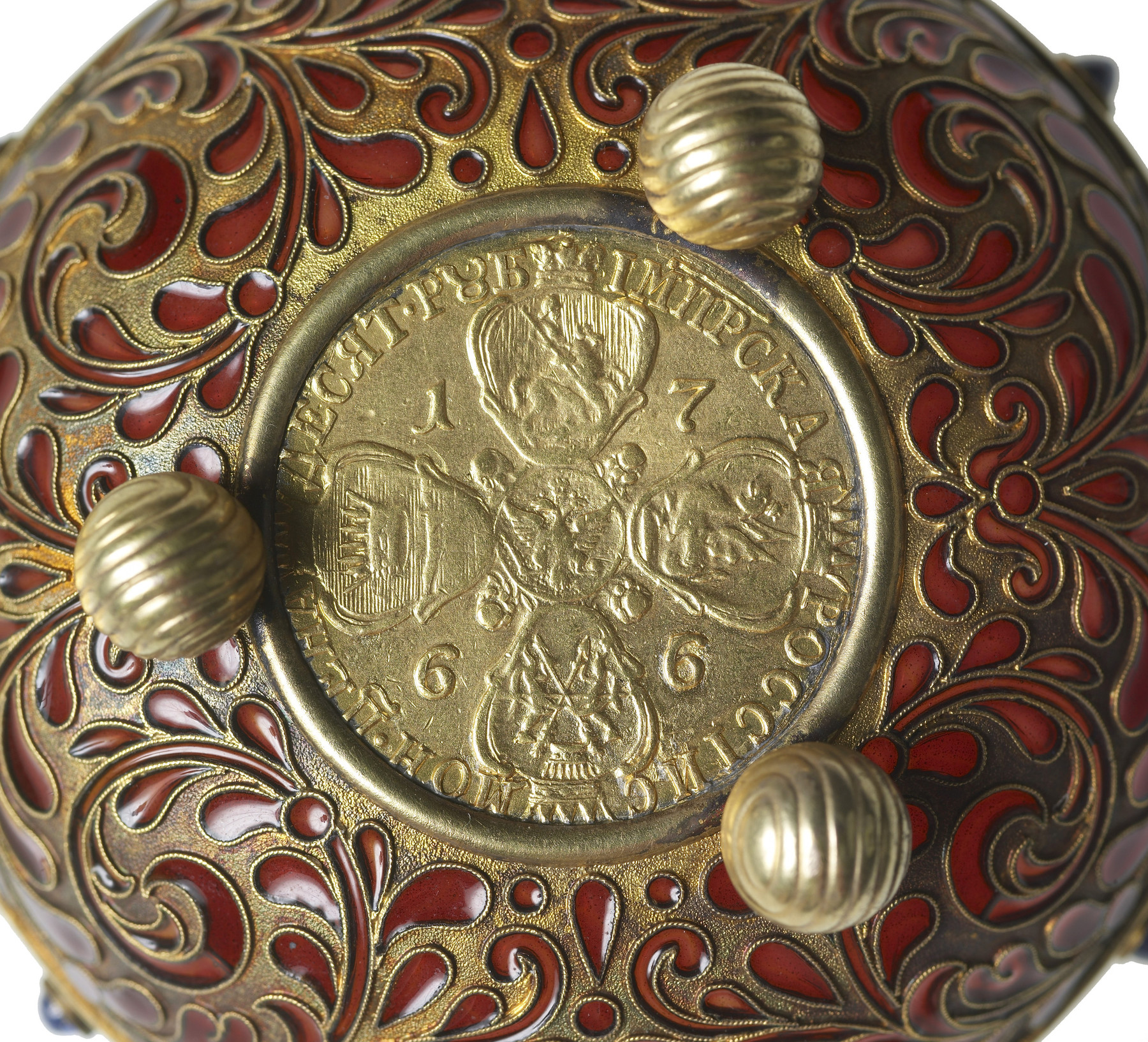Charka
(18th and 19th Centuries )
Set in the center of the charka is a gold ten-ruble coin faced with an enameled profile bust of Catherine II. On the reverse appears the date 1766 and a quatrefoil decoration showing in its center the double-headed eagle flanked by the coats of arms of Siberia (a pair of sables); Astrakhan (crown and sword); Moscow (St. George and the Dragon); and Kazan (winged dragon).
Around the charka's top edge extends a pattern of blue scrolls and yellow circles in plique-à-jour enamel. Below, the decoration consists of foliage in red plique-à-jour enamel in a pierced gold background. Six cabochon sapphires are affixed to the border on the exterior. The Lesser State Emblem of the Russian Empire appears on the face of the handle, which is also in pierced, plique-à-jour enamel.
Inscription
Provenance
Provenance (from the French provenir, 'to come from/forth') is the chronology of the ownership, custody, or location of a historical object. Learn more about provenance at the Walters.
A la Vieille Russie, New York; Jean M. Riddell, Washington, D.C., November 7, 1977, by purchase; Walters Art Museum, 2010, by bequest.
Geographies
Russia, St. Petersburg (Place of Origin)
Measurements
H: 1 1/4 x W with handle: 4 x D: 2 15/16 in. (3.2 x 10.2 x 7.4 cm)
Credit Line
Bequest of Mrs. Jean M. Riddell, 2010
Location in Museum
Not on view
Accession Number
In libraries, galleries, museums, and archives, an accession number is a unique identifier assigned to each object in the collection.
In libraries, galleries, museums, and archives, an accession number is a unique identifier assigned to each object in the collection.
44.981








